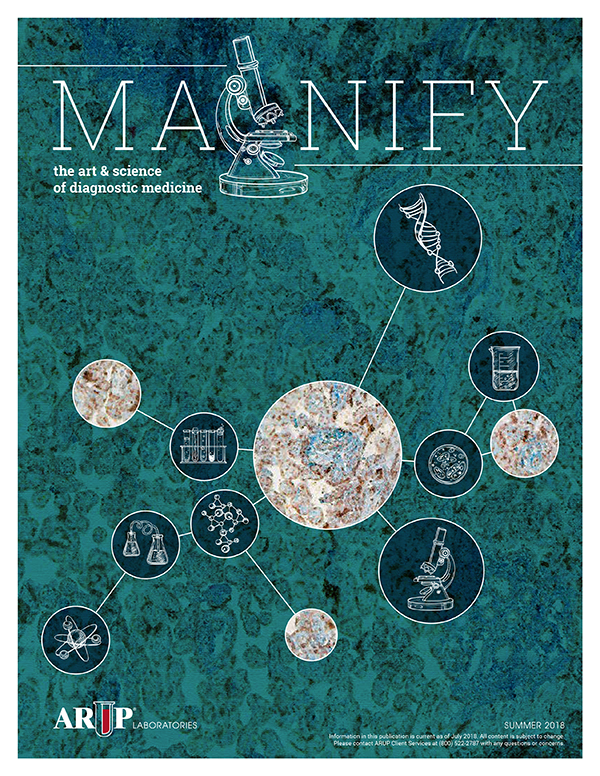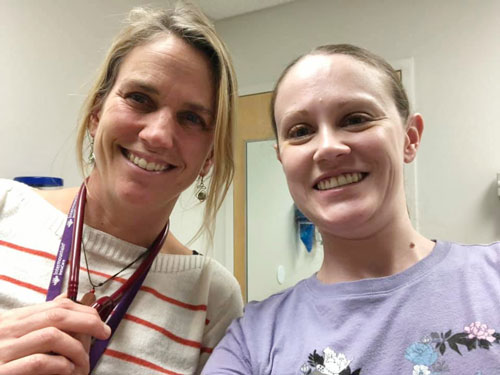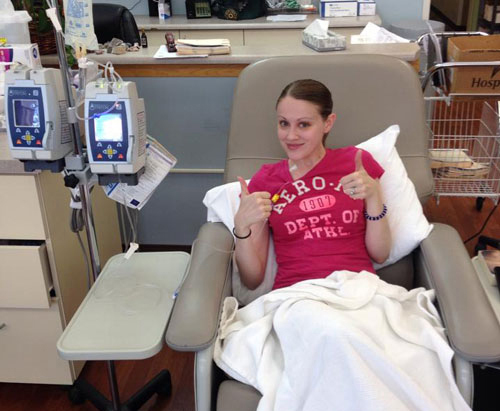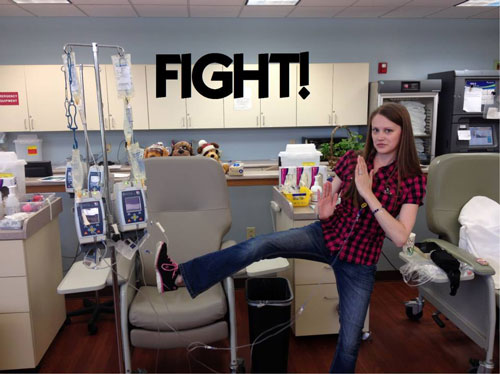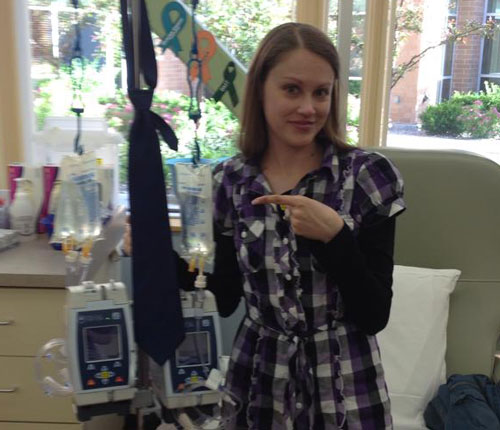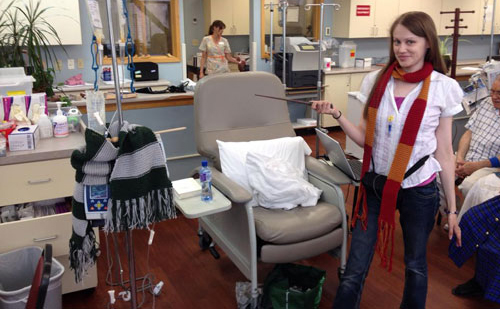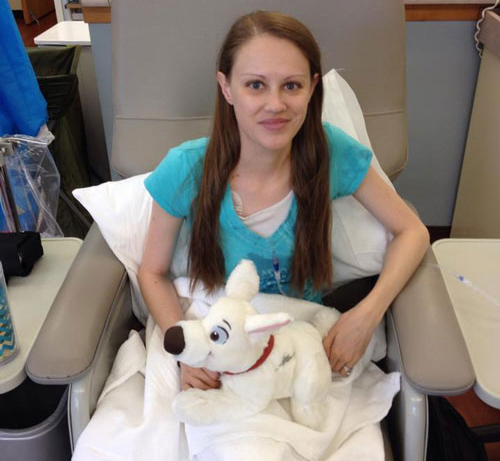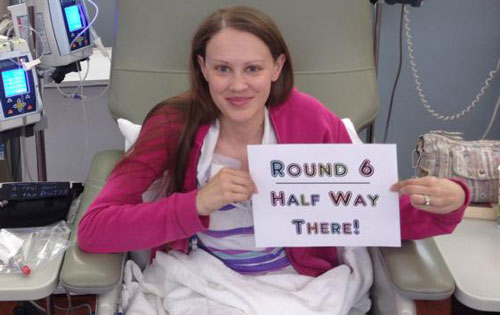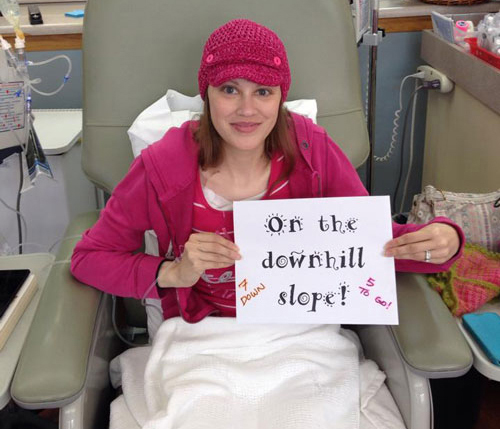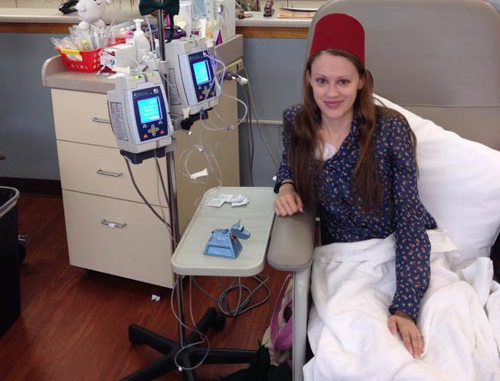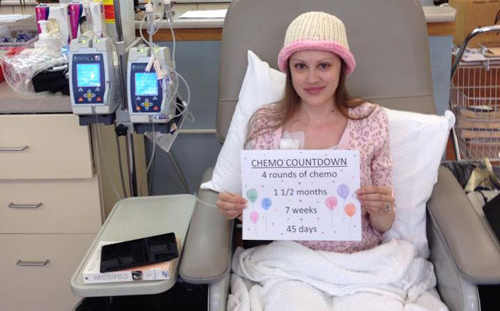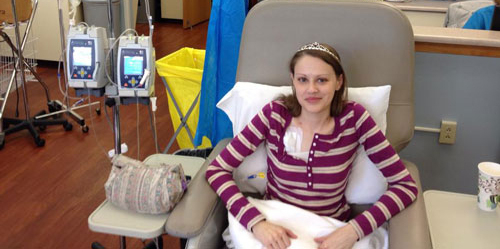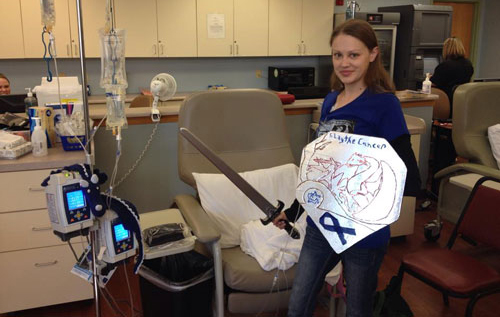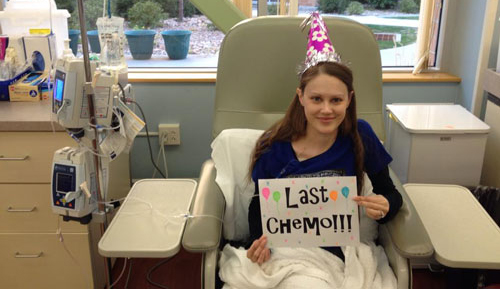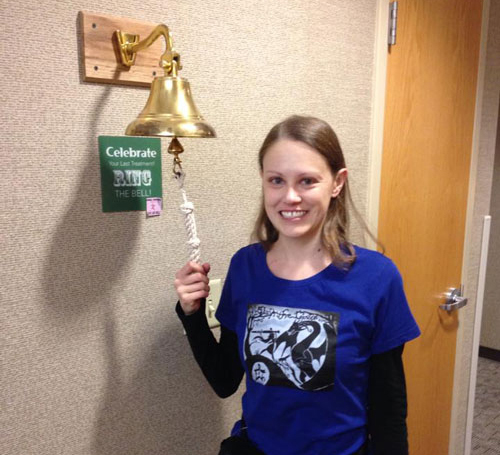ARUP’s Occult Blood, Fecal by Immunoassay: An Accurate, Inexpensive Screening Tool for Colorectal Cancer
Gillian Jones, at 40 years old, believes she likely would not be alive today and would not be the mother of a beautiful, lively 3-year-old named Sydney if she had not listened to herself. She was 29 years old when her husband, Jonathan, urged her to seek care for a severe sore throat. After Cynthia Lodding, MD, confirmed that she had strep, Lodding asked if there was anything else.
Gillian Jones was 29 years old when she learned she had colon cancer. She credits a doctor, who listened and ordered a screening test for colorectal cancer, with her life. Now, at 40 years old, she’s cancer free and encouraging others to get screened.
“I had some symptoms of dark stool for about two weeks, but I didn’t think anything of it, figured it was something I ate. [But] I just had this nagging feeling, ‘You need to say something,’” Jones recalled.
Lodding explained that dark stool could indicate the presence of blood, and she needed to have it checked. The doctor then ordered a test for occult (hidden) blood in stool, a laboratory test that can be used to look for possible signs of colorectal cancer (CRC). Jones remembered returning home with the at-home collection kit for the test—something her husband nervously joked about.
“He said, ‘Well, they sure do strep tests a lot differently than I remember,’ and then I had to fill him in about my symptoms,” Jones said.
Jones’ test came back positive. An urgent colonoscopy revealed a mass, which an initial biopsy showed was not cancerous. Within weeks, doctors surgically removed seven inches of Jones’ colon, along with the ping-pong-ball-sized mass. As she was being discharged from the hospital, Jones learned that further testing had detected cancer in the mass and a few lymph nodes, and she would need chemotherapy.
“I was devastated. Being told, ‘You have cancer,’ your world stops spinning, your plans for the future are taken from you, and your mind goes straight to, ‘I’m going to die,’” Jones said.
Colorectal Cancer by the Numbers
- Siegel RL, Kratzer TB, Giaquinto AN, et al. Cancer statistics, 2025. CA Cancer J Clin. 2025;75(1):10-45.
- American Cancer Society. Survival rates for colorectal cancer. Revised Jan 2025; accessed May 2025.
Jones is one of a growing number of younger people diagnosed with colon cancer. An American Cancer Society report said CRC rates have declined since the mid-1980s in adults 50 years and older by about 1% a year due to screening. However, rates increased by 2.4% per year from 2012 to 2021 in people younger than 50 years. The U.S. Preventive Services Task Force (USPSTF) now recommends people with average risk start getting screened for CRC at 45 years old, rather than 50.
“The gold standard is colonoscopy, but fecal immunochemical tests (FITs) are highly accurate and inexpensive, and specimens can be collected at home, without any patient prep,” said Heather Nelson, PhD, DABCC, medical director of Clinical Chemistry and Mass Spectrometry at ARUP Laboratories. Nelson added that FITs, including the test that ARUP offers, Occult Blood, Fecal by Immunoassay, make it possible to screen more people, especially as guidelines change to encourage testing in younger patients.
“By using FIT first, we are prioritizing patients who need colonoscopies. Positive FIT results suggest there is a bleed in the lower intestinal tract, which could be caused by several different factors, including diverticulitis, polyps, precancerous lesions, or even colon cancer, and necessitate further testing, most often a colonoscopy,” Nelson said.
Jones has had more colonoscopies than most people will ever have in their lifetime and says a FIT is easy in comparison.
“I’d rather do that any day. I just had to go to the bathroom. The kit came with some tweezers and gloves, and I just put the sample in a container and took it back,” Jones said. She added that, for her, prepping for a colonoscopy often involves hours of vomiting in addition to the multiple bowel movements.
Nelson explained that the FIT kit includes a collection tube with a small, grooved wand in the cap. Patients collect a sample of their stool with the wand, put the wand back in the tube, which contains a stabilizer for hemoglobin, and return it to their doctor.
“[ARUP’s] FIT assay is an FDA-approved test with some of the highest amounts of published data supporting its clinical performance. It’s one of the best performers out there, and annual screening by a FIT is considered a first-tier test for colorectal cancer screening,” Nelson said.
The USPSTF recommends colonoscopies every 10 years for people with average risk factors, but that FIT be performed annually.
“Ten years is a long time, and something can develop. More frequent, less invasive screenings can help catch something as it starts,” Nelson said.
Jones does not have a close family history of colon cancer. Her dark stool was the only clue something was wrong, and she is grateful that she spoke up and her doctor listened. She leaned on her support system, her family, her friends, and her faith, while enduring months of chemotherapy, and was inspired by someone who was also fighting colon cancer.
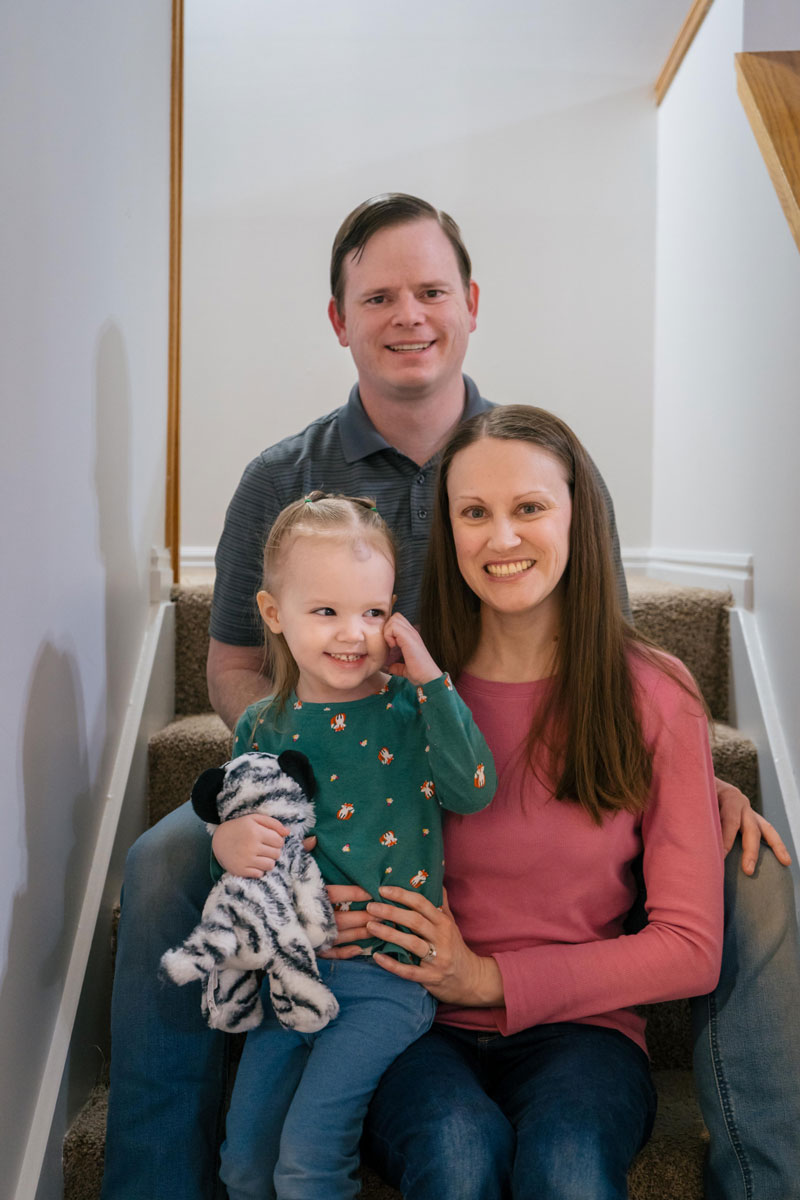
“I posted on Facebook and I just said, ‘Hey, I’m going through this. Does anyone know anyone with colon cancer?’ And a neighbor said, ‘You’ve got to meet my buddy, Dov Siporin. He is a hoot. He loves to prank the nurses [and] just do all these funny things at chemo,’” Jones said. In one now infamous prank, Jones said Siporin had a friend dress up as the Grim Reaper, gave foam swords to patients receiving chemotherapy, surprised the staff, and captured the chaos on video, which is now on YouTube.
Siporin worked at ARUP for 16 years. He was diagnosed with CRC at 33 years old and lost his fight seven years later, in March 2015, but he left a legacy at the Huntsman Cancer Institute, as indicated by a Facebook post five years after his death honoring him as “Chemo Cupid.” He had dressed up as Cupid with a crown of hearts, a bow and arrow, and candy hearts painted on his chest that said, “Terminally Yours,” and “Chemo 4 Life.” Comments included, “I’ll always be grateful for his humor,” and, “He taught me one of my most valuable lessons that happiness was a choice.”
Jones recalled some important advice he gave her during a chance meeting at Salt Lake City’s Comic Con, an annual pop culture expo. “I remember him saying, ‘If you get to the point that you just can’t take it anymore, and you need to fall down and scream and cry, it’s okay. Do it, but you need to get back up and keep going and fighting.’” Jones said she started doing funny things at chemotherapy to help others like Siporin had. She dressed up, put costumes on the infusion stand, and posted the photos on Facebook.
“Everyone would write happy … encouraging messages, and then on my bad days, when I just felt so sick and felt like giving up, I could go back to them,” Jones said.
The photos and messages she received are now in a special album, packed in a box for a move she and her family have made to a neighborhood with more children, where she hopes her daughter will make plenty of friends. Jones has been closely monitored with colonoscopies and has been cancer free for a decade, the same amount of time she says she struggled with infertility before her diagnosis.
“After chemo, we started looking into fertility treatments again … and we got our one little miracle. I thought for sure there was no way I’d be able to have children after chemo,” Jones said. Her husband added, “I just love her [Sydney]. She’s so curious and full of life and a joy to have around.”
Jonathan said it is uncomfortable to talk about poop, but his wife wouldn’t be here if she hadn’t.
“There’s some taboo about talking about stool and bowel movements. We don’t talk about having issues with our GI [gastrointestinal] tract, but we need to normalize it,” Nelson said.
Jones now encourages others to get checked. “Find out what cancers run in your family, see if you need screening earlier than recommended, and don’t ignore your symptoms,” she said.
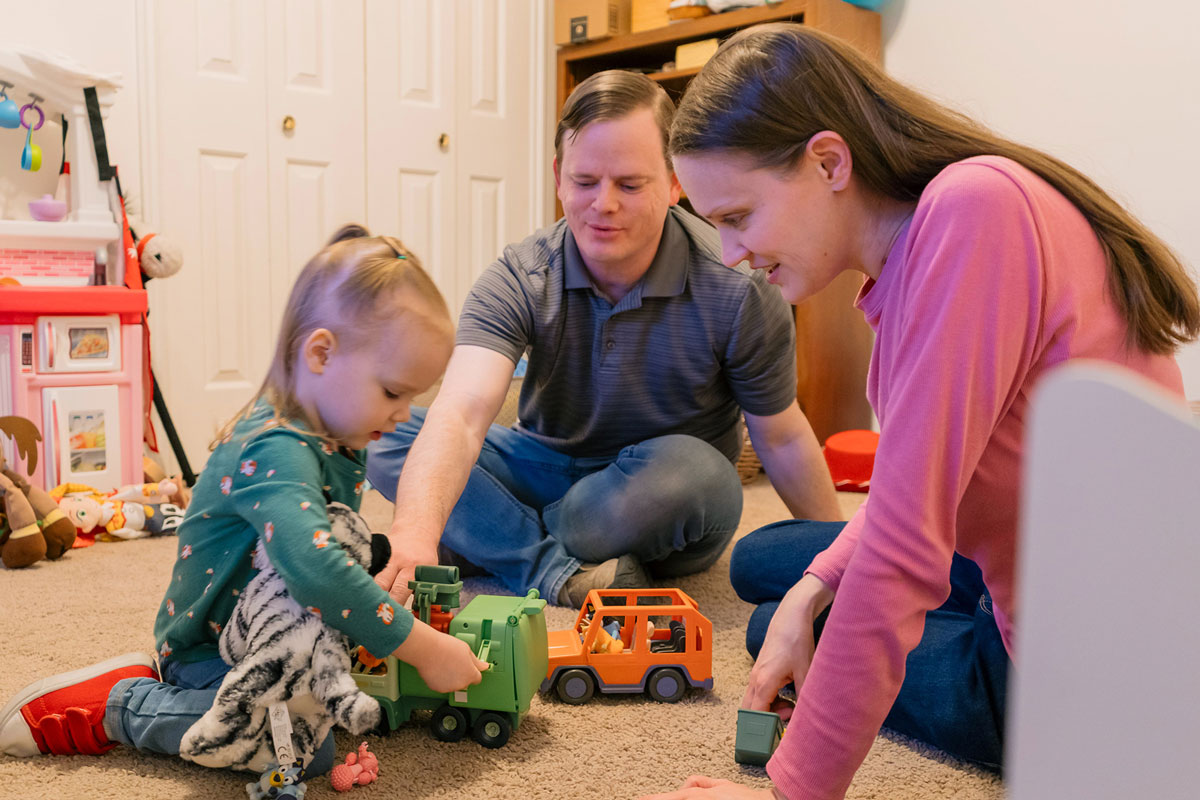
From Collection to Results
At Home
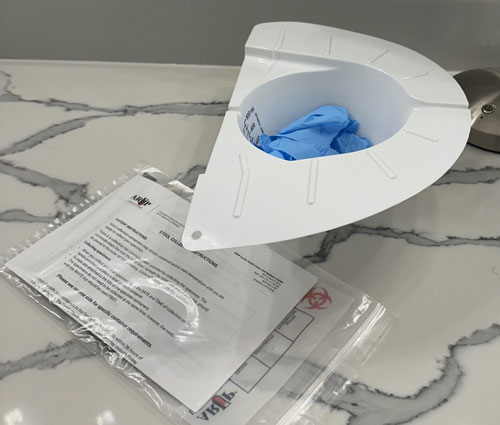
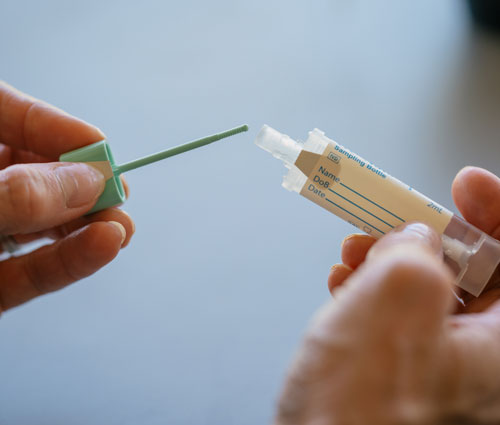
The kit for ARUP’s FIT (Occult Blood, Fecal by Immunoassay) includes a urine and stool specimen collection pan, gloves, a collection tube with a mint green cap and tiny wand inside, a biohazard bag, and instructions.
At the Lab
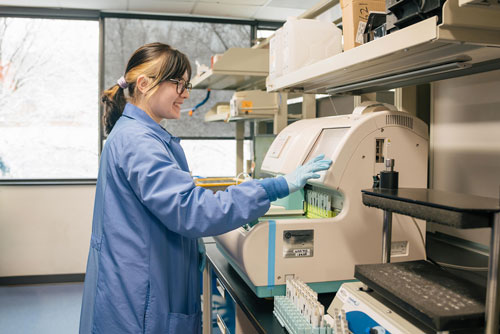
Sydney Korzep, a technician in Infectious Disease Antigen Testing at ARUP, monitors specimens in a fully automated FIT analyzer nicknamed Diana. Diana swooshes, whirs, and occasionally beeps while testing.
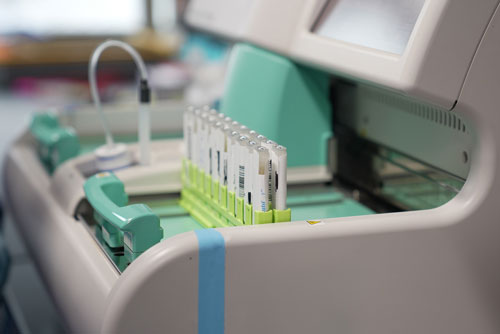
Specimens are ready for testing. All testing steps, from punching the foil on the specimen tubes to reading the optical density, happen inside the instrument.
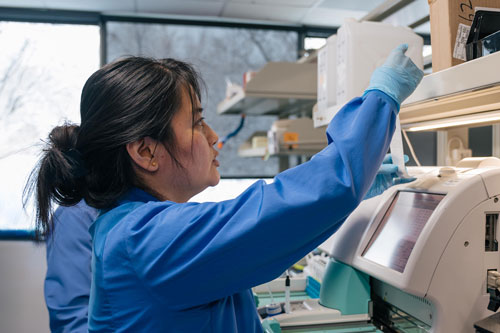
Tenzin Norgyal, MLS(ASCP), in Infectious Disease Antigen Testing at ARUP, checks results, which are printed on receipt paper. The results also interface directly with the laboratory information system (LIS). Once ARUP has the specimen, clinicians and patients can expect results in two to three days.
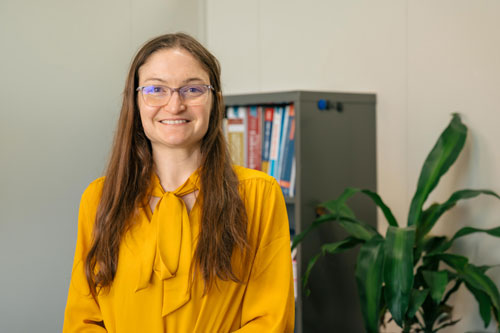
Heather Nelson, PhD, DABCC, medical director of Clinical Chemistry and Mass Spectrometry, pictured in her office at ARUP, is among the experts who oversee ARUP’s FIT.


